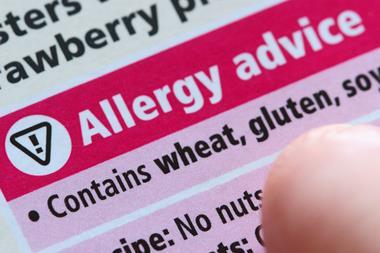
You can see the recommended diet here (PDF).
Public Health England has admitted there will have to be massive changes to the national diet - on top of its call for parents to ban all sugary drinks for children - if consumers are to meet the new Scientific Advisory Committee on Nutrition (SACN) targets.
As the government agreed to cut recommended daily sugar intake levels in half and increase recommended fibre intake by 80% for adults, PHE described the necessary changes as “not representative of the average diet eaten in the UK.”
“The type of diet will require a substantial change in dietary habits,” says PHE document released today.
“Innovative food solutions from manufactures and retailers may also be needed.”
PHE admitted that nearly nine out of ten adults would fall foul of the new recommended sugar limit of 5% of energy intakes, with most people across all age groups not hitting the existing 10% limit, and teenagers the furthest off.
A model diet released today by the British Nutrition Foundation (BNF) shows how much of a challenge it will be for consumers to hit SACN’s targets.
The BNF said the call to cut recommended daily sugar intake levels in half and increase fibre intake by 80% for adults was “not representative” of most people’s diets.
The model of what the typical British diet would have to look like to meet the targets, which allow for just 5-6 teaspoons for women and 7-8 teaspoons for men, was released in full today.
The BNF study suggests that there will also have to be a huge reduction in alcohol intake, with the model suggesting a diet with only two 175ml glasses of red wine a week.
Non-drinkers would not have much choice either. The only other drink options would be water, tea or coffee without sugar and soft drinks that were either no or very low calorie.
The Grocer has previously revealed that the BNF believes consumers would have to consume eight portions of fruit and vegetables per day and relegate all sugary snacks to once or twice a week treats to hit the targets.
“Although feasible, this dietary pattern is not representative of most people’s diets in the UK,” said the BNF.
“Recent dietary surveys indicate that on average we are eating more free sugars and less fibre than the pre-existing recommendations. Achieving the new and tougher SACN recommendations will therefore be a considerable challenge, and require a substantial change in consumer behaviour.”
However, PHE said that other countries, including the US, could lead the way for the UK. “Analysis in the USA by the US Department of Agriculture suggest that healthy USA-style diets provide 6-7% of energy as “added sugars”, with healthy Mediterranean-style diets typically providing 6%,” says the document.
Downloads
BNF New Diet Recommendations
PDF, Size 0.34 mb















1 Readers' comment